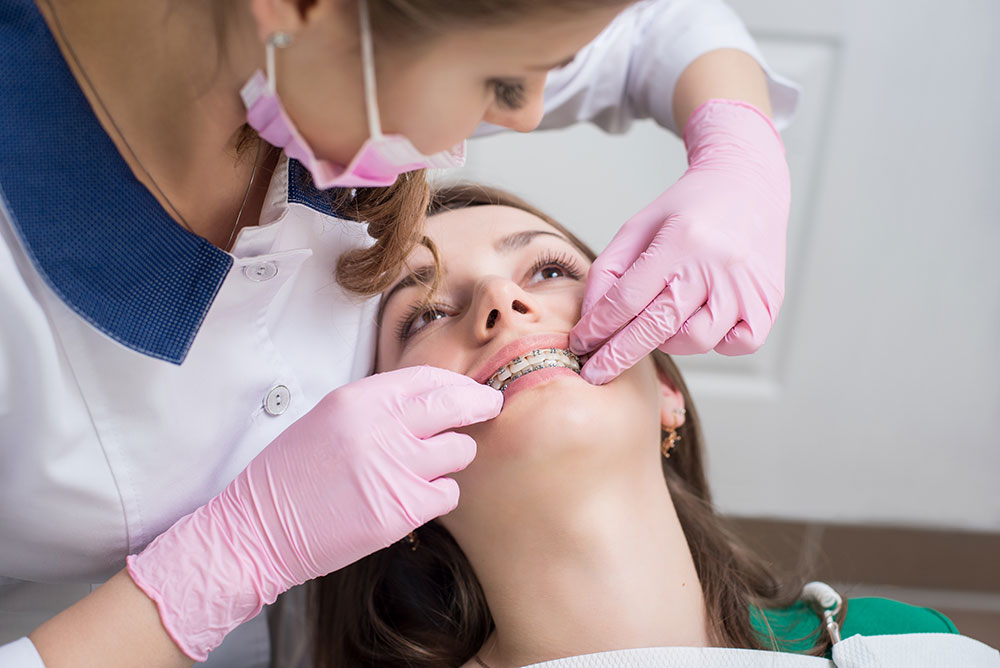Legacy Orthodontics Things To Know Before You Get This
Legacy Orthodontics Things To Know Before You Get This
Blog Article
An Unbiased View of Legacy Orthodontics
Table of ContentsFacts About Legacy Orthodontics UncoveredLegacy Orthodontics Can Be Fun For AnyoneThings about Legacy OrthodonticsLegacy Orthodontics Fundamentals ExplainedThe 45-Second Trick For Legacy Orthodontics
At Advanced Orthodontics, we supply clients with a all natural treatment experience. Furthermore, we provide adjustable treatment timetables, adaptable payment options and an enjoyable, satisfying experience. leesburg braces. Phone call ( 480) 357-4900 today for even more info and routine a consultation.An orthodontist is a dentist educated to diagnose, stop, and treat teeth and jaw abnormalities. Orthodontists function with people of all ages, from youngsters to grownups.
Malocclusion, or misaligned teeth, can cause dental issues, including dental cavity, gum tissue condition, and challenging or unpleasant eating. Not everybody is born with straight teeth. If you have a bad bite or huge areas between your teeth, you might desire to speak with a dental practitioner specializing in orthodontic care.
The Definitive Guide to Legacy Orthodontics
( Photo Credit Report: DigitalVision/Getty Images) Orthodontists utilize fixed and removable dental tools, like dental braces, retainers, and bands, to change the position of teeth in your mouth. Orthodontic therapy is for oral abnormalities, including: Misaligned teethBite problems, like an overbite or an underbiteCrowded teeth or teeth that are as well far apartJaw misalignmentThe goal of orthodontic therapy is to enhance your bite.
While you may assume of orthodontists as primarily for children or teens that need braces, they can fix oral issues at any type of age. Orthodontists go to university, dental school, and orthodontic college.
All orthodontists are dental professionals, but not all dental professionals are orthodontists. Orthodontic residency programs provide extensive, concentrated instruction for oral specialists. They concentrate on two areas: Exactly how to effectively and safely move teeth Exactly how to appropriately direct growth in the teeth, jaw, and faceOnce an orthodontist has finished training, they have the choice to end up being board licensed.
The Best Guide To Legacy Orthodontics
Misalignment, or malocclusion, is one of the most typical factor individuals see an orthodontist. It is genetic and is the outcome of size differences in between the upper and lower jaw or in between the jaw and teeth. Malocclusion causes tooth congestion, a twisted jaw, or irregular bite patterns. Malocclusion is usually treated with: Your orthodontist attaches metal, ceramic, or plastic square bonds to your teeth.
Some people need a headwear to aid relocate teeth into line with stress from outside the mouth. A retainer is a customized tool that keeps your teeth in location.
They can create added space in the mouth without having to pull teeth. Orthodontists utilize cords, surgical screws, or plates to support your jaw bone.
You may need to see an address orthodontist if you have: Crowding or otherwise enough space for all of your teethOverbite, when your top teeth come your bottom teethUnderbite, when your bottom teeth are too much forwardSpacing or concerns with gapsCrossbite, which is when your top teeth fit behind your bottom teeth when your mouth is closedOpen bite or a vertical gap between your front bottom and upper teethMisplaced midline, when the center of your base and top teeth do not align Dealing with an oral malocclusion can: Make biting, eating, and talking easierImprove the proportion of our face and your overall appearanceEase discomfort from temporomandibular joint disordersSeparate your teeth and make them much easier to cleanse, helping prevent tooth degeneration or dental caries It's usually a dentist that initially notifications misaligned teeth during a regular examination.
The 15-Second Trick For Legacy Orthodontics

During your first orthodontic assessment, you'll likely have: An oral examPhotos taken of your face and smileDental X-raysPanoramic (360 level) X-rays of your face and headImpressions to create molds of your teethThese examinations will help your orthodontist understand how to wage your therapy. orthodontist. An orthodontist is a dentist that's had training to treat your teeth and jaw
Orthodontists might do surgical procedure, exams,X-rays,and even more to aid you achieve an extra comfy, much healthier smile. An orthodontist is focused on your bite, so something like a cracked tooth would be taken care of by a dental professional. Orthodontists are dentists but not all dental professionals are orthodontists. Orthodontists are focused on your bite, or the means your teeth meshed, and the straightness of your teeth.
Ever before asked yourself exactly how celebrities constantly appear to have perfectly aligned teeth? Orthodontists are dental experts who concentrate on correcting abnormalities in the teeth and jaws.
Legacy Orthodontics for Beginners

, orthodontists have a varied toolkit at their disposal. These tried-and-true braces make use of a system of braces bound to the teeth and attached by wires.
Clear aligners, like Invisalign, are a preferred choice for patients seeking an extra discreet therapy choice. These detachable trays are personalized to progressively change the teeth's position. Headgear may be used in conjunction with dental braces or aligners to use additional targeted forces, especially for dealing with jaw inconsistencies. In instances of narrow jaws, palatal expanders can be utilized to produce space for appropriate tooth placement.
Report this page